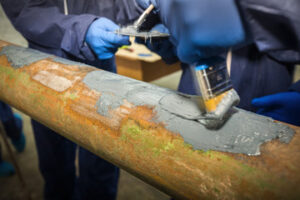Custom Glass Atlanta is one of the best ways to improve the look and feel of a space. It can create a more sophisticated and inviting atmosphere that will attract potential clients or customers.

Several factors will determine the price of your cut glass. These include the type of glass, size and thickness, and any customizations.
Glass is a beautiful material that brings light, transparency, and openness to the structures it enhances. Custom glass takes this beauty to the next level, allowing architects, designers, and builders to bring specific aesthetic goals to life in residential and commercial spaces alike. From textured glass to digital printing and backlit glass solutions, the possibilities are endless when it comes to creating unique and eye-catching designs with custom glass.
Whether you’re looking to revamp your office space, update your home’s bathroom, or create the perfect bridal party gift set, custom glass is an excellent way to add style and sophistication. From sleek glass shower doors and countertops to backlit shelving and tabletops, you can customize the size, shape, and color of your custom piece to fit your unique needs.
Customizable glass products are also a great way to boost the visual appeal of your business. For example, a striking storefront window design can create an enticing visual statement that attracts potential customers and establishes your brand identity.
In addition, frosted glass can help provide privacy in areas such as spas, bathrooms, or VIP sections of clubs. Etched glass is another popular choice for adding privacy to spaces, as it’s created by applying an abrasive substance (like blasted sand or acid) to the surface of the glass in a decorative motif.
Glass features can also enhance your home’s overall ambiance and increase its value. For example, a glass countertop can add elegance and durability to your kitchen while providing easy maintenance and protection for your prized possessions. Glass shelving can provide a modern and minimalist look while still allowing you to display your favorite books and artwork. And a glass shower door will make your bathroom feel spacious and inviting, while creating a spa-like experience.
Moreover, customizable glass is an attractive alternative to traditional materials like wood and metal for building facades. It’s also easier to maintain, as glass is resistant to scratches, fading, and discoloration. Furthermore, it’s often designed with energy efficiency in mind, which can save you money on your utility bills and contribute to a more environmentally conscious lifestyle.
Functionality
Glass adds an elegant touch to any room, but it also offers practical benefits. Customized glass enhances the appearance of interior windows, doors, and partitions while maximizing light transfer for brighter spaces and a more open feel. Customized glass can also be used to enhance commercial storefronts with a transparent facade that connects the business and the street, creating a unique accent to any architecture.
With innovative technology, customized glass can also contribute to energy-efficient building practices by regulating interior temperatures. Photovoltaic glass, which generates electricity and reflects sunlight to reduce heat buildup, and dynamic glass that adjusts tint to control solar gain and glare are some examples of how customized glass supports greener buildings.
When choosing a glass company, make sure to choose one that can provide both fabrication and installation services to ensure your product is delivered with quality. Reputable companies will provide a detailed quote that shows the materials and processes they will use to produce your piece. Be sure to read through it and ask any questions you may have before proceeding. Once the details are agreed upon, the glass company will schedule a time for installation.
Once the glass is delivered and installed, it’s important to check it for any flaws. Look for scratches and other imperfections, as well as proper alignment and functionality of hardware. If any problems are found, contact your glass company and explain the issue. It’s also important to maintain the appropriate cleaning and maintenance requirements for your glass pieces, as some textures and finishes require specialized cleaners to keep them in good condition.
Custom glass is the perfect solution to transform any space and add a unique architectural design element. It can also enhance the functionality of your home by allowing natural light to flow throughout, making smaller rooms appear larger and more spacious. It can even enhance your home’s security by adding a decorative and elegant touch to your door and window frames. You can choose from a wide range of colors and textures, including clear, frosted, and reflective options, as well as etching and engraving possibilities.
Durability
Glass is a material that is designed to be strong, but it also needs to be durable in order to protect and prolong the lifespan of any installation. While there are many factors that affect the strength of any piece of Glass, it is important to understand what goes into making a quality product so that you can be confident in the protection and longevity of your own Glass installation.
When designing your custom Glass project, the first step is to determine the appropriate type of Glass to use. This is determined by various factors such as strength, transparency and thermal properties. The chosen Glass is then cut to the specifications outlined in the design phase using precision cutting tools and techniques. Depending on the application, additional processes may be applied to the surface of the Glass to enhance appearance and add durability.
One example of this would be adding a layer of etching to the Glass surface. This gives the piece a unique and interesting texture that is both durable and visually appealing.
Another way to improve the durability of your Custom Glass is by using protective accessories. This includes the use of coasters and placemats to prevent scratching of the glass surface. These accessories are inexpensive and easy to install, but they can make a big difference in the longevity of your glass tabletop.
A quality Glass fabrication process can include a radius corner finish, which is a technique that rounds the sharp protrusions at each corner of a rectangular piece of glass. This provides a safer, more comfortable finishing touch to your installation and can be used for residential and commercial applications.
The ability to increase home value is a major concern for many homeowners and one way to accomplish this goal is by adding custom Glass pieces. Whether it is a custom shower door, vanity mirror or cabinet doors, adding a customized Glass piece will instantly boost the appeal of any room and improve the overall aesthetic of your home. By choosing a company that offers professional installation, you can be assured of the quality and durability of your new Glass piece.
Safety
Whether working in the office or in the field, glass fabrication companies must always follow strict safety protocols. This includes proper training on all machinery used throughout the process. It also means keeping a doctor or paramedic on call to handle any emergencies that may arise during manufacturing. In addition, workers should wear all appropriate protective gear to ensure their health and wellbeing.
One of the most common safety measures in use is fire-rated glass. This is a type of glass that has passed a series of nationally established testing standards and has been assigned a rating based on how long it can safely remain in place during a fire. This type of glass can be found in a variety of applications, from commercial buildings to residential homes.
Another popular glass upgrade is bulletproof glazing. This is a special type of glass that can withstand a wide range of ballistic impacts without shattering or leaving dangerous shards behind. In order to achieve this, the material is manufactured using a polycarbonate glass substitute that has been tested and certified to meet specific impact standards.
In addition to bulletproof glass, there are many other ways to make a facility more secure. Some of these include the installation of deadbolts, which require a key to unlock them from the outside and are much more difficult to break into. Reinforced door frames can also be an effective security measure, as they can add strength and stiffness to the frame and help it resist forced entry.
Safety upgrades are a great way to help employees and visitors feel safe and secure in your facilities. However, it’s important to remember that even with all the precautionary measures in place, accidents still happen. Having a doctor or paramedic on hand to assist with any injuries can be a big difference when it comes to ensuring your team is as safe as possible. For more information on how to improve the safety of your business, contact the experts at Custom Glass. We can discuss your options and provide you with the best solutions for your needs.



